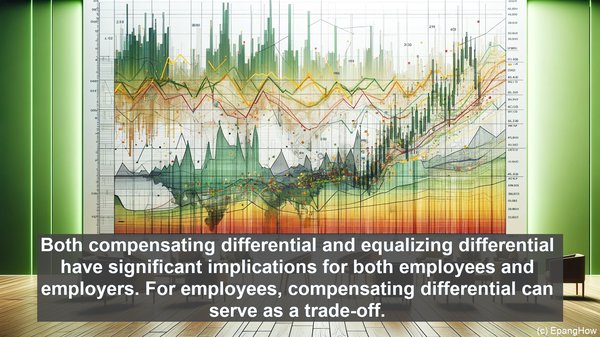Introduction: The Intricacies of Wage Determination
Hello everyone! When it comes to the labor market, the determination of wages is a complex process. Numerous factors come into play, including the concepts of compensating differential and equalizing differential. While these terms may sound similar, they actually represent distinct phenomena. Today, we’ll explore the differences between them, shedding light on their implications for both employees and employers. So, let’s dive in!

Compensating Differential: Balancing the Scales
Compensating differential refers to the wage difference that arises due to variations in the desirability of different jobs. In essence, it’s the additional pay that individuals receive for taking on jobs with less favorable attributes. These attributes can range from physical risks and discomfort to undesirable working hours or locations. The underlying principle is simple: to attract workers to less desirable jobs, employers must offer higher wages. By doing so, they compensate employees for the drawbacks associated with these positions. For example, a job in a hazardous environment might offer a higher wage compared to a similar role in a safer setting. This wage differential acts as a form of compensation for the increased risk and potential harm the worker may face.
Equalizing Differential: Achieving Balance in the Market
On the other hand, equalizing differential refers to the wage difference that arises due to variations in the supply and demand of labor. It’s essentially the market’s way of achieving equilibrium. When the demand for a particular skill or occupation is high relative to its supply, the wages for that job tend to increase. This serves as an incentive for more individuals to enter that field, thereby increasing the labor supply. As the supply grows, the wage differential gradually diminishes, eventually reaching a point of equilibrium. Conversely, if the supply of labor exceeds the demand, the wages for that job may decrease, acting as a deterrent for individuals to enter the field. This interplay between supply and demand, and the resulting wage differentials, helps maintain balance in the labor market.

Implications for Employees and Employers
Both compensating differential and equalizing differential have significant implications for both employees and employers. For employees, compensating differential can serve as a trade-off. They may be willing to accept a job with less desirable attributes if the wage is sufficiently higher. On the other hand, equalizing differential can guide individuals in their career choices. The prospect of higher wages in a particular field may incentivize them to pursue the necessary education or training. For employers, these differentials are crucial in attracting and retaining talent. By offering competitive wages that consider both compensating and equalizing differentials, they can ensure a steady supply of skilled workers while also accounting for the specific challenges associated with certain jobs.
